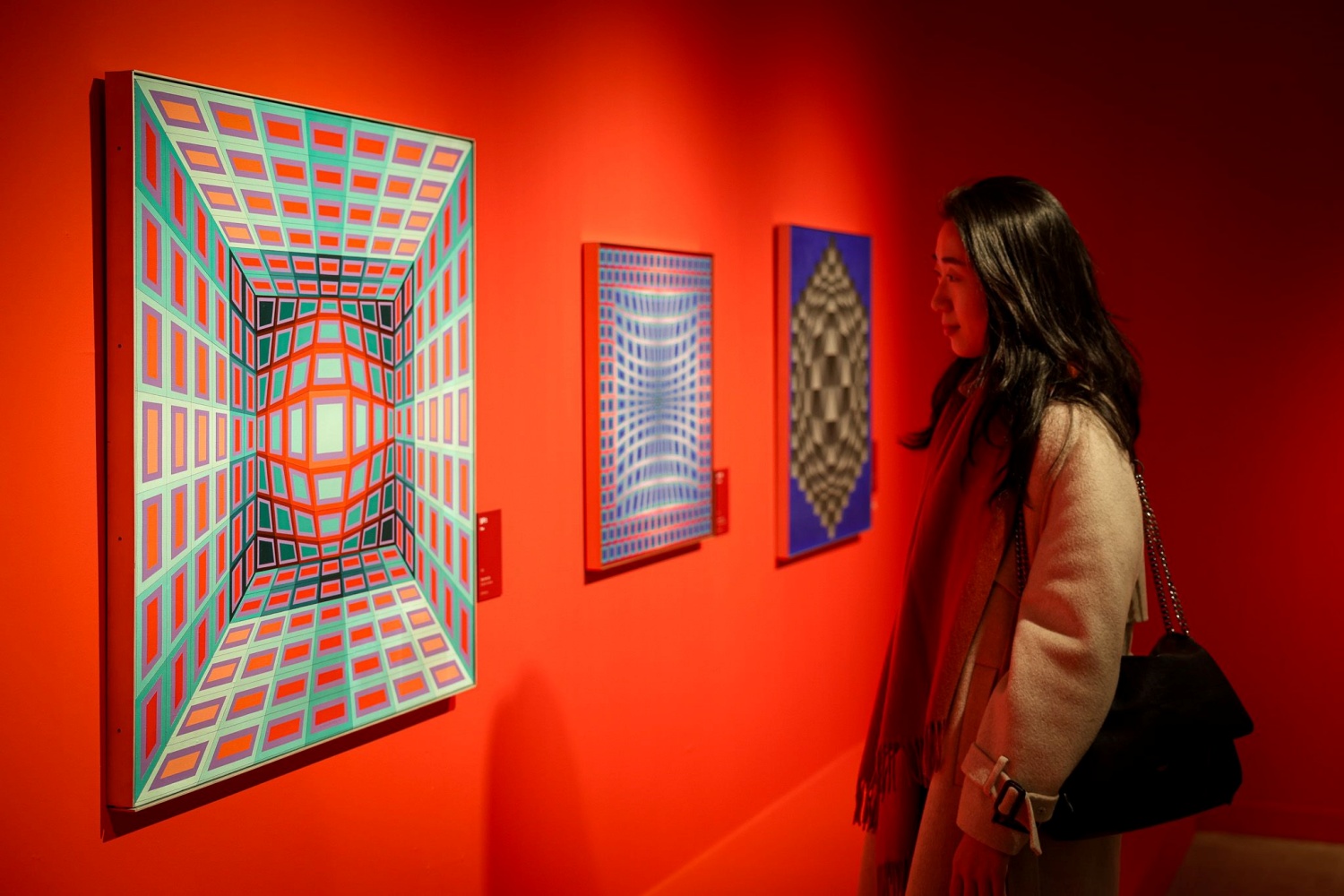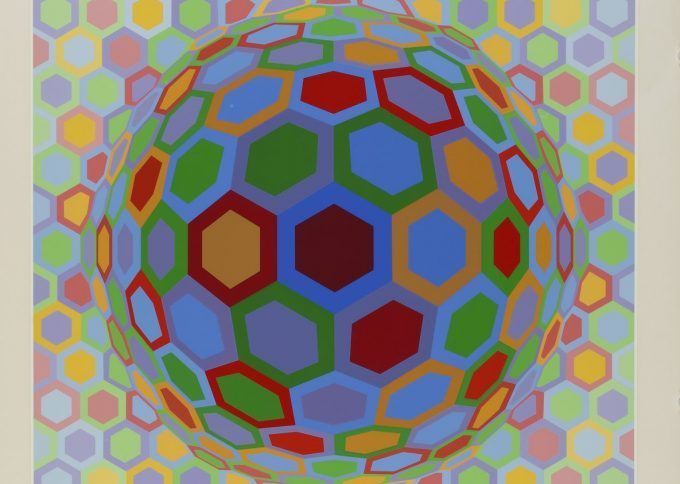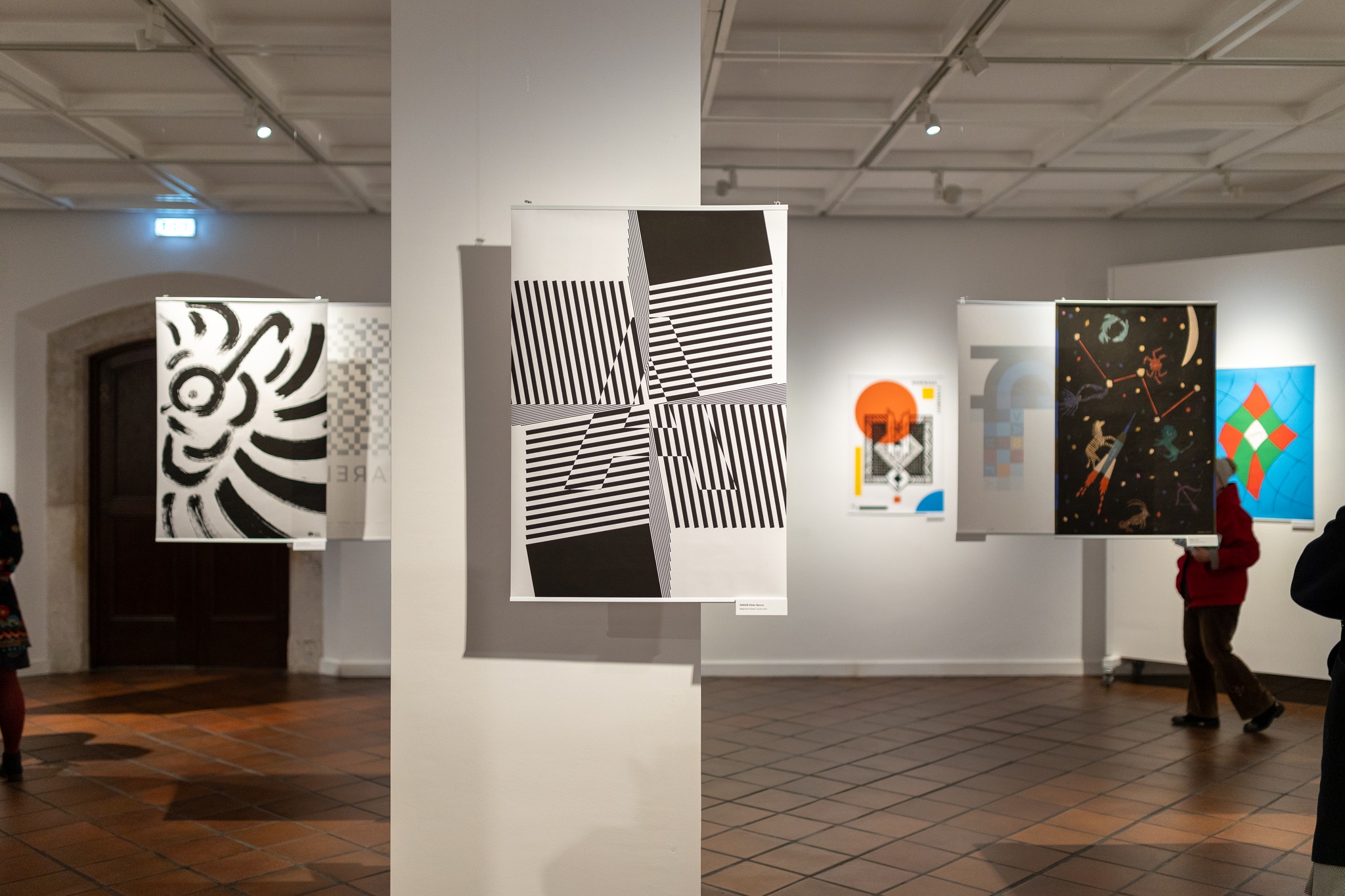
The exhibition is a selection of masterpieces from the Vasarely Museum Budapest.Continue reading

Victor Vasarely is revered as the innovator of 20th century painting, the father of op-art, and his paintings hang on the walls of major museums around the world. Born 118 years ago, he lived and worked in Paris for most of his life, but always felt he belonged to Hungary.
There are not many Hungarian painters whose paintings can be found in the world’s most important public collections, from Budapest to London, or Buenos Aires to Jakarta, Indonesia, reports Magyar Nemzet. However, Victor Vasarely is one of them. Győző Csiszár (later Vásárhelyi) was born on April 9, 1906 in Pécs (southwestern Hungary).

Vasarely in 1930. Photo via Wikipedia.
His family moved to Budapest in 1908, where he became acquainted with painting at a very young age, from the 1920s onwards. Then he turned to commercial art, joined the workshop of Sándor Bortnyik, and in 1930, his works were exhibited at the Museum of Applied Arts.
In the same year, he moved to Paris, where he became world famous and remained a citizen of the French capital until his death.
Although he is often called a “French painter of Hungarian origin,” he always proudly claimed to be Hungarian, and when he returned to his homeland for the first time in 1968, he spoke to the press without any accent. Also in 1968, he donated 123 of his silkscreen prints to the Museum of Fine Arts in Budapest, and in 1987, he further donated 411 of his works to the Vasarely Museum in Óbuda (District 3), which he personally helped to open. His museum in Pécs, which was established in 1976, in the house on Káptalan Street where he was born, also houses many of his works.

Vasarely exhibition n 1969 in Budapest. Photo via Fortepan/Kereki Sándor
His art is characterized by a masterly blend of colors and a perspective effect, often creating an optical illusion that is both modern and timeless.
His use of geometric shapes, variations of circles, diamonds, squares, and triangles, creating the impression of depth and movement, is a particularity: the kinetic effect is created by the combination of colors and shapes. His works, many decades old, do not seem outdated, in fact they feel as if they were created yesterday.

Photo via Facebook/Vasarely Múzeum Budapest
When he turned 85 in 1993, he wrote in a message to MTI: “I think with special affection of my homeland, which I have never forgotten, and whose memory still gives me the strength to continue my work, despite the problems of my illness. Whatever recognition I have received, whatever accolades I have received, I have always felt honored to be Hungarian, and my creative work is clearly rooted in these roots.”
Today I still feel I belong to Hungary. It is with the greatest affection and the deepest feelings that I think of this country and the ties that bind me to it on this day,”
Vasarely declared.
The artist died in 1997, but his works are not only to be found in museums. His style is well suited to the post-modern era, and his work can be found in a thousand places: sculptures, murals, metro stations, on bags and all kinds of objects. Vasarely is now part of popular culture, but Hungary can be justly proud of him as one of the greatest Hungarian artists.
Via Magyar Nemzet; Featured image via Facebook/Vasarely Múzeum Budapest